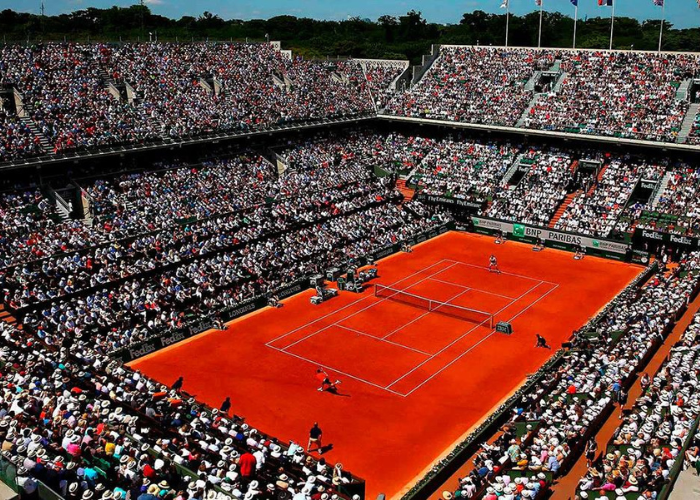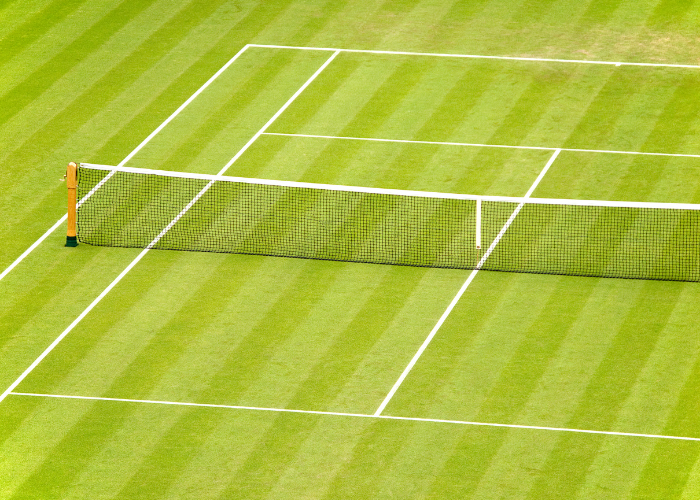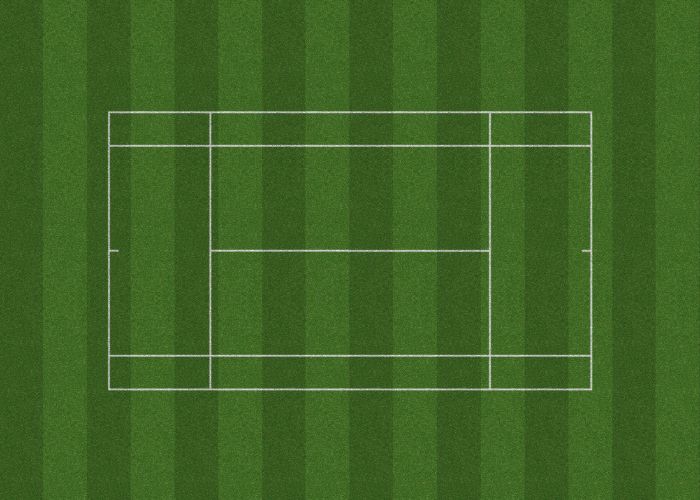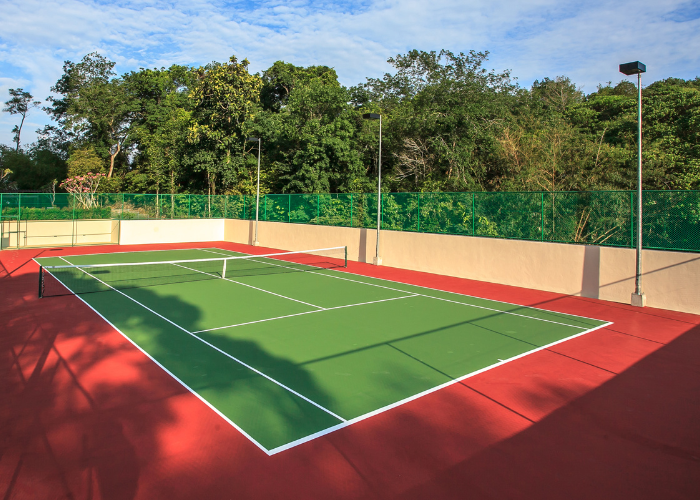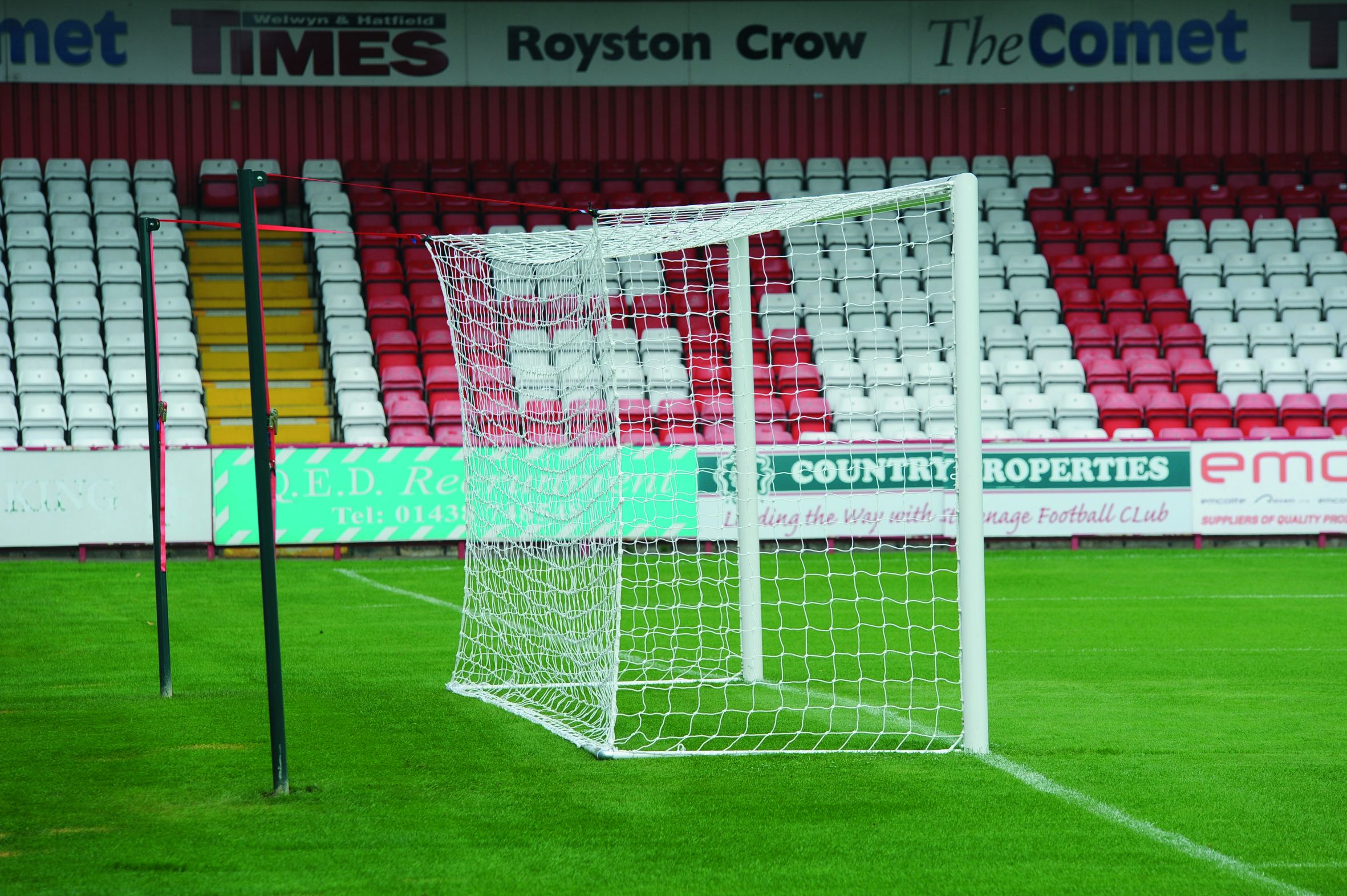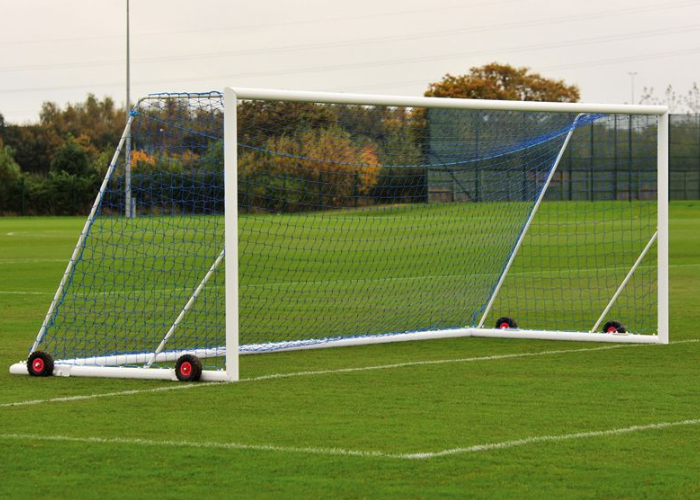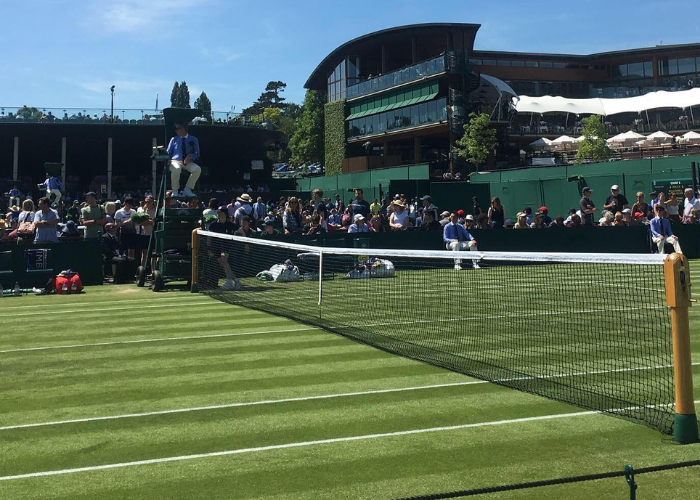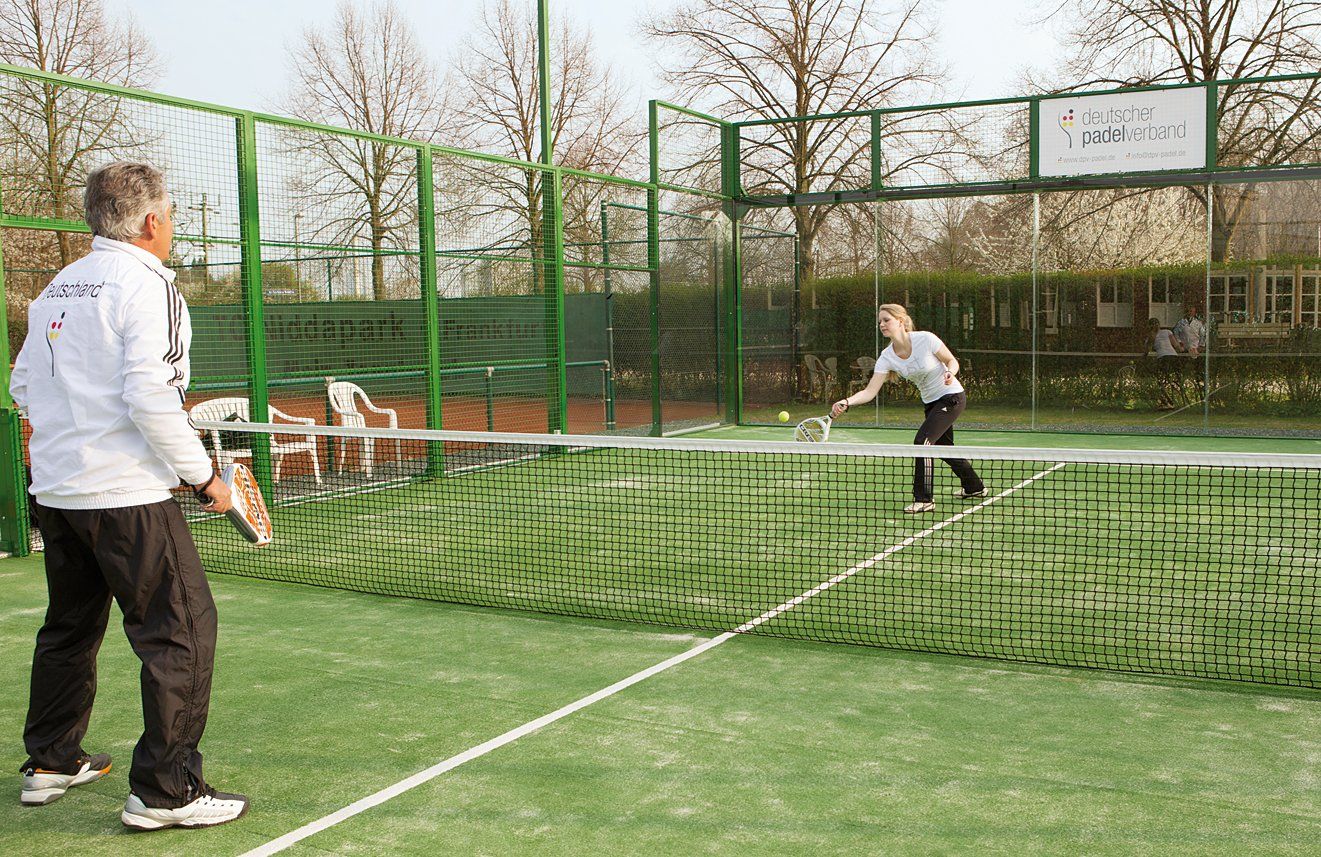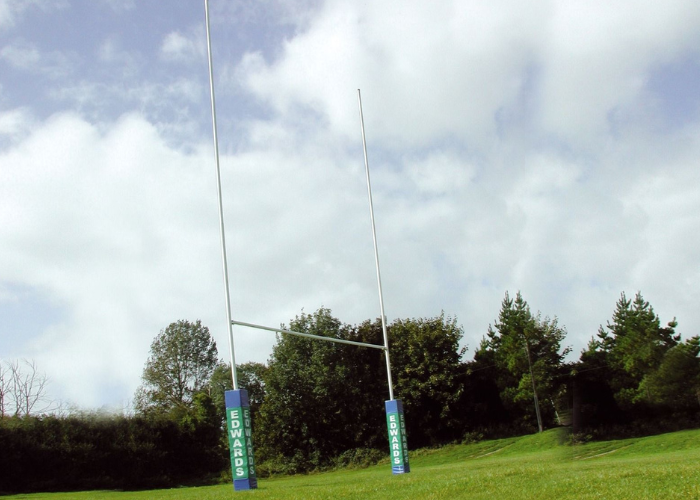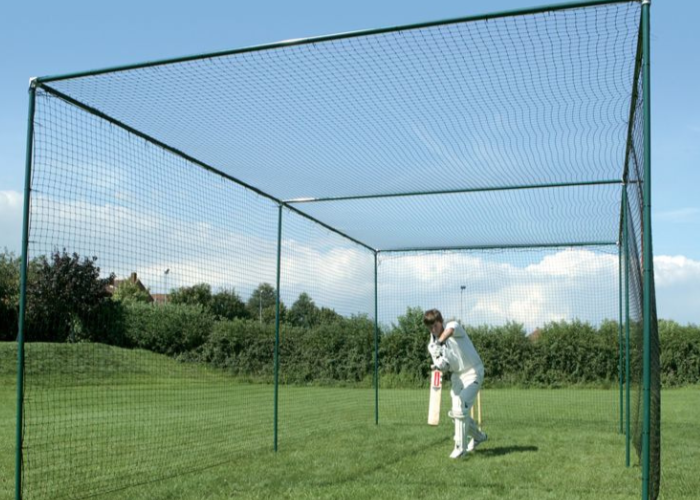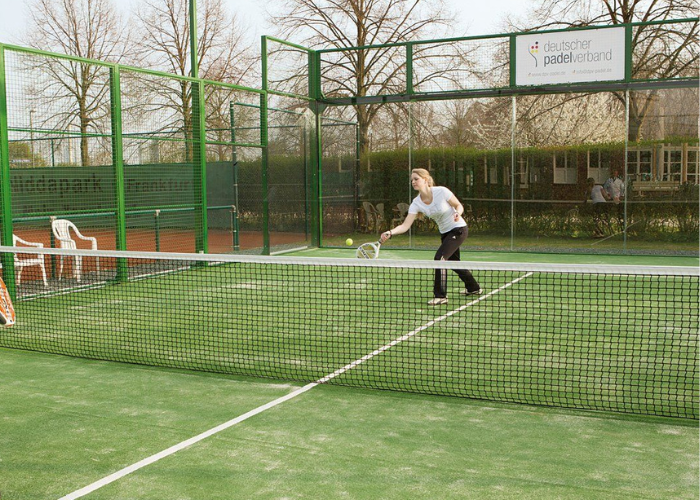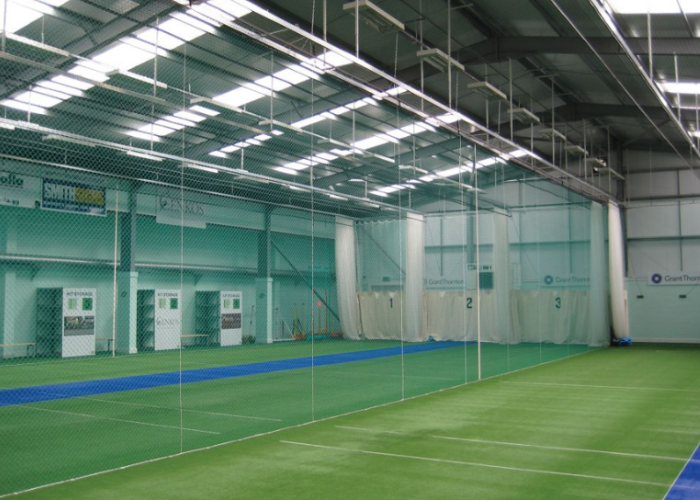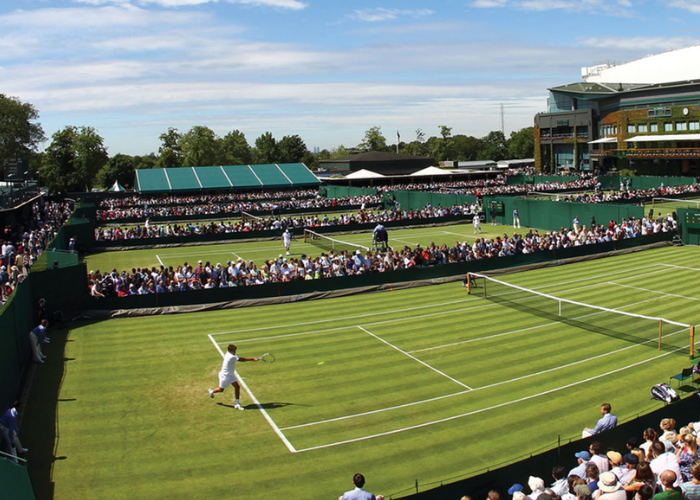We use cookies to make your experience better. To comply with the new e-Privacy directive, we need to ask for your consent to set the cookies. Learn more.
The Ultimate Guide to Tennis Court Sizes
- Admin
- Blog Posts
- 27 Apr 2022
-
296views
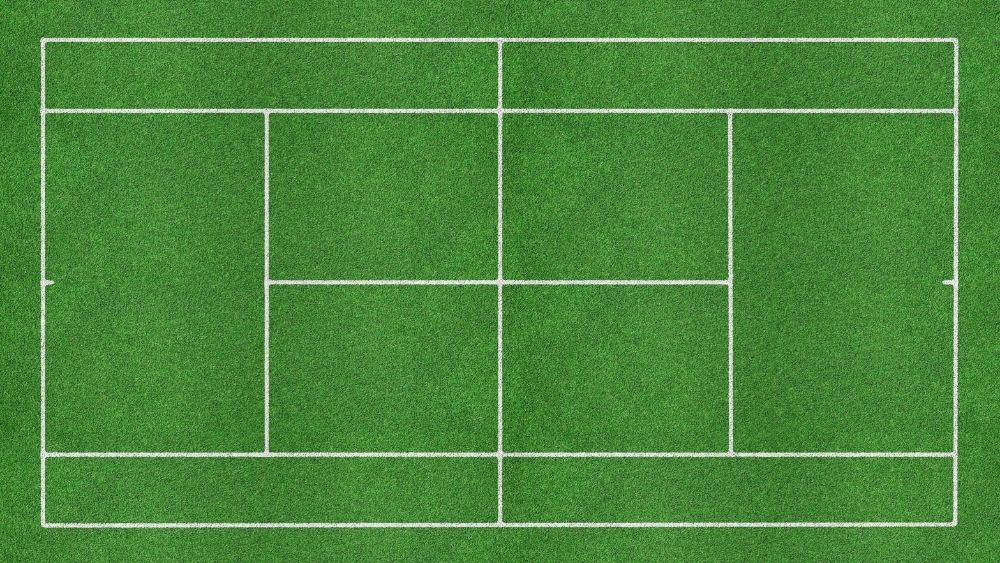
Aside from what it's constructed from, the size of a tennis court is a really important factor in the game. Of course, tennis court sizes will vary slightly depending on the type of game being played (i.e., whether it's a singles or doubles match), but there are a couple of different standards that are important to note.
If you're preparing to build a tennis court, or you're just curious about tennis court dimensions and how they might affect your game, our guide has all the info you need.
Tennis Court Size in Feet
| Dimension | Singles Court | Doubles Court |
|---|---|---|
| Length | 78 feet | 78 feet |
| Width | 27 feet | 36 feet |
Tennis Court Size in Metres
| Dimension | Singles Court | Doubles Court |
|---|---|---|
| Length | 78 feet | 78 feet |
| Width | 27 feet | 36 feet |
Professional tennis courts do have to adhere to a few sizing regulations to make the court compliant.
However, the size of a court purely for personal or recreational use is down to the discretion of the court's owner. That being said, it may be easier to follow official sizing advice so the court is suitable for all levels of play.
Here are the most common tennis court sizes to help you plan your own court for public or private use!
Wimbledon Centre Court Tennis Court Dimensions
In the world of tennis, the Centre Court at Wimbledon is the pièce de résistance of tennis courts, so if you've got the space, trying to recreate this coveted court is every tennis facility's dream!
The Centre Court at Wimbledon measures the standard 23.77 metres long and 10.97 metres wide for doubles matches and 8.23 metres wide for singles. The height of the net is 1.07 metres at the centre for singles and 1.06 metres for doubles.
The total area of the grass court measures 41 metres by 22 metres.
|
Tennis Trivia: The grass on Centre Court at Wimbledon is cut down to just 8mm, making it shorter than any other grass court. |
Size of a Singles Tennis Court
The total area of a singles tennis court is 195.65 metres². The singles sidelines are 23.77 metres (or 77.99 feet) long, and the baseline is 8.23 metres (or 27 feet) wide.
The singles tennis net posts should be placed approximately 0.91 metres away from the sidelines.
Size of a Doubles Tennis Court
The total area of a doubles court is 260.87 metres². The doubles sidelines are also 23.77 metres long - the same as singles - and the baseline is 10.97 metres (35.99 feet) wide.
The doubles tennis net posts should be stationed 0.91 metres away from the doubles sidelines (or 1.82 metres away from the singles sidelines).
Know Your Tennis Court Markings
The size of the tennis court surface is just one part of constructing a court for home or commercial use. You also need to know the measurements of the tennis court markings for an accurate court that's suitable for all players.
- Firstly, the singles side-line marks the outer edge of the court boundary used during a singles game and is typically 27 feet wide.
- Next, there is the baseline, positioned at the furthest backline at either end of the court, 39 feet from the net. Players serve from this line, which is bisected by the centre mark, which is used as a reference point for players.
- Most courts also have a doubles sideline, which is the outermost edge used during a doubles game and measures 36 feet wide.
- The service box, another marking within the tennis court, measures 21 feet from the net and 13.5 feet wide. When the ball is served, it must land within the opponent's service box.
- Finally, as mentioned above, the baseline centre mark is 4 inches long and constitutes the last feature of a court. It is where the ball is served.
It's also important to note that both outdoor and indoor courts are constructed using the same markings and measurements.
Find Out How to Set Up a Tennis Court With Our Installation Guide
How to Measure a Tennis Court Area
When measuring a tennis court for personal use, you have some flexibility. The playing area without runbacks is naturally smaller, but more room is required beyond just the court markings.
It's important to measure your court beyond the lines to obtain accurate measurements, with both the centreline and the centre mark precisely aligned to the court's centreline.
The recommended minimum length for a court, including runbacks, is approximately 120 feet, and the minimum width, also with room for runbacks, is 60 feet; this ensures sufficient playing space.
Depending on the court's intended location, consider not only the clearance around the court markings but also the overhead clearance.
The International Tennis Federation (ITF) court size dimensions recommend a minimum overhead clearance of 9m above the net height, 5.75m above the baseline marking, and 4m above the rear of the runback area.
Whether outdoor or indoor, ensure there is sufficient overhead space for the game to be played without obstruction.
The International Tennis Federation Facilities Guide contains all the 'best practices’ and regulations professional courts should follow.
Are Tennis Courts the Same Size?
No, tennis courts are not all the same size. Professional courts adhere to specific regulations, while recreational courts can vary significantly in size based on personal or local preferences.
If you're constructing a tennis court for public use in a sports facility or leisure centre, we recommend sticking to the official tennis court dimensions for ease of use for players of all levels and backgrounds.
Does Court Surface Affect Tennis Court Dimensions?The court surface only affects the playing characteristics rather than the size. Different surfaces, such as grass, hard, or clay courts, influence ball bounce and player speed, which may impact the style of play but not the dimensions of the court. |
The Roundup: Tennis Court Sizes for Private & Commercial
Building tennis courts according to the official dimensions is crucial for ensuring an optimal playing experience. Official standards allow for consistency in play, accommodating players of all skill levels, and maintaining fairness in matches.
By following these guidelines, facilities can provide a reliable environment that enhances skill development and enjoyment for both recreational and competitive players alike.
Continue your deep dive into everything related to tennis and racket sports with the Edwards Sports blog, which is filled with the latest tournament news and sports information.
Read All-Things Tennis On Our Blog!
FAQs
What is the Footprint of a Tennis Court?
The footprint of a tennis court varies based on its type. A singles court measures approximately 195.65 square metres, while a doubles court covers about 260.87 square metres, taking into account the necessary space for runbacks and safety clearances.
What is the Net Size for a Tennis Court?
The net size for a tennis court is 0.914 metres high at the centre and 1.07 metres at the posts. The overall width of the net is 10.97 metres, matching the width of a doubles court.
Is Wimbledon Real Grass?
Yes, Wimbledon is played on real grass. The iconic event features a carefully maintained grass court surface, known for its unique playing characteristics, which adds to the tournament's prestige and traditional charm within the sport of tennis.
Why Are Tennis Courts Blue Now?
Tennis courts are now often blue to enhance visibility for players and spectators. This modern choice contrasts well with the yellow tennis balls, making matches easier to follow while also aligning with trends in professional sports for optimal viewing experiences.
How Big is a Full Size Tennis Court?
A full size singles tennis court is 78 feet by 27 feet. A full size doubles tennis court is 78 feet by 36 feet.
What is the Official Size of a Tennis Court?
According to the ITF, a tennis court should be 36 feet wide and 78 feet long. When singles tennis games are played, the sidelines are considered ‘out’, therefore, the court is 27 feet wide.








